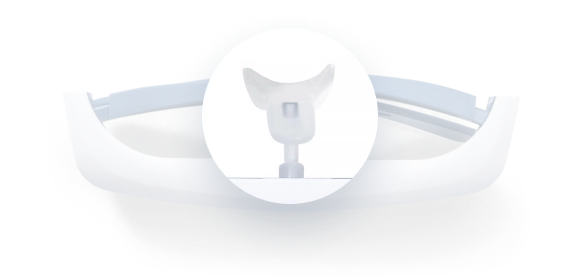В мире, где технологии пересекаются со здоровьем и благополучием, терапия синим светом выделяется как новое решение для различных физических и психических заболеваний. От здоровья кожи до регулирования настроения, эта неинвазивная терапия предлагает широкий спектр применений. Но что такое терапия синим светом и как она может быть полезна для вас? В этом подробном руководстве мы раскрываем тайны терапии синим светом, исследуя её науку, применения и потенциальные преимущества для тех, кто стремится улучшить психическое состояние и омолодить кожу.
Что такое синий свет?
Синий свет — это часть видимого спектра света, характеризующаяся короткой длиной волны и высокой энергией, обычно в диапазоне от 380 до 500 нанометров. В отличие от вредного ультрафиолетового излучения, синий свет широко считается безопасной альтернативой для искусственной светотерапии. Эта терапия использует полезные свойства синего света для улучшения настроения, лечения сезонных перепадов настроения и поддержки естественного цикла сна и бодрствования организма. Имитация естественного солнечного света с помощью терапии синим светом эффективно помогает лечить зимнюю хандру и перенастраивать внутренние часы организма, что делает её популярным выбором для тех, кто испытывает колебания настроения в тёмные месяцы.
Терапевтические эффекты терапии синим светом не ограничиваются улучшением настроения. Высокоэнергетическая природа синего света позволяет ему проникать в поверхность кожи, стимулируя выработку коллагена и уменьшая акне без побочных эффектов, связанных с длительным воздействием ультрафиолета. Это делает его ценным инструментом в дерматологии для улучшения здоровья и внешнего вида кожи. Этот вид терапии особенно полезен для людей, страдающих от кожных заболеваний, таких как акне, и может также помочь уменьшить появление мелких морщин и складок со временем.
Устройства, такие как очки для светотерапии Luminette 3 и лампа для светотерапии Drive, часто используются для терапии синим светом, решая широкий спектр физических и психологических проблем со здоровьем. Эти устройства разработаны так, чтобы быть удобными и простыми в использовании, позволяя легко включать сеансы терапии в повседневную жизнь. Портативность и простота использования этих устройств позволяют получать пользу от терапии синим светом дома, в офисе или даже в путешествиях, что делает её подходящим вариантом для занятых людей.
Хотя терапия синим светом в целом безопасна, полезно использовать её с осознанием времени и интенсивности, чтобы избежать ненужного напряжения глаз или нарушения циркадных ритмов. Тем, кто хочет получить персональные рекомендации, стоит проконсультироваться с врачом, чтобы подобрать наиболее комфортную длительность и яркость. Профессионал поможет настроить план, который поддержит преимущества терапии синим светом, сохраняя её сбалансированной и эффективной.
Кроме того, продолжающиеся исследования изучают более широкие последствия воздействия синего света, включая его потенциальную роль в улучшении когнитивных функций и продуктивности, расширяя таким образом его применение за пределы традиционных терапевтических целей. Учёные также исследуют, как синий свет можно использовать в сочетании с другими длинами волн для более комплексного лечения, что может открыть новые возможности в области психического и физического здоровья.

Как работает терапия синим светом?
В своей основе терапия синим светом использует силу определённых длин волн света для вызова положительных биологических реакций. Энергия света, излучаемого лампами синего света, поглощается кожей и подлежащими тканями, инициируя каскад клеточных процессов, которые способствуют восстановлению клеток и гормональному балансу. Эта фототерапия применяется в нескольких дерматологических процедурах и оздоровительных практиках, используя её способность улучшать регуляцию серотонина и выработку мелатонина.
a. Синий свет и наши глаза
Когда синий свет попадает в глаз, он воздействует на светочувствительные клетки. Исследования показывают, что это сигнализирует о подавлении выработки мелатонина (так называемого гормона сна), способствуя повышенной бдительности, концентрации и продуктивности. Хотя это может быть полезно для бодрствования и концентрации в течение дня, воздействие синего света вечером может нарушать нормальные циклы сна, затрудняя засыпание и поддержание сна. Тем не менее, при стратегическом терапевтическом применении синий свет может помочь сбросить биологические часы организма, когда цикл сна и бодрствования выравнивается, а уровни гормонов сна/бодрствования, таких как мелатонин, соответственно балансируются.b. Синий свет и кожа
Хотя синий свет можно стратегически использовать для повышения бдительности и концентрации и перенастройки биологических часов организма, он также может помогать очищать кожу от акне и лечить повреждения от солнца и немеланомные раки кожи. При воздействии на кожу свет активирует белки, содержащие светочувствительные молекулы, увеличивая активность митохондрий. Это, в свою очередь, повышает окислительный стресс. Клетки кожи реагируют, выделяя молекулы, управляющие воспалением и контролирующие рост клеток. Воздействие синего света на определённые участки может улучшить некоторые кожные состояния, такие как акне и некоторые незлокачественные кожные образования.
Преимущества терапии синим светом
Преимущества терапии синим светом выходят за рамки косметических эффектов, предлагая широкий спектр применений — от улучшения психического здоровья до поддержки здоровья кожи. Эта инновационная терапия ценится за свои многофункциональные возможности.
Улучшение настроения и концентрации
Терапия синим светом известна своим влиянием на улучшение настроения и концентрации. Воздействие синего света влияет на химический баланс мозга, повышая уровень серотонина и улучшая когнитивные функции. Для повышения бдительности исследование 2018 года показало, что синий свет улучшает время реакции и бдительность, когда человек не находится в оптимальное время активности. Кроме того, исследование 2017 года показало, что участники лучше справлялись с тестами на вербальную память и консолидацию памяти после воздействия синего света.
Лечение зимней хандры
Короткие зимние дни могут вызывать у некоторых людей зимнюю хандру. Терапия синим светом эффективно лечит эти сезонные изменения настроения, имитируя естественный свет, что помогает поддерживать стабильное настроение. Она также эффективна при лечении несезонных состояний глубокой печали, особенно в сочетании с антидепрессантами, как показали исследования.
Повышение уровня энергии
Терапия синим светом может имитировать бодрящий эффект солнечного света, обеспечивая прилив энергии, который помогает поддерживать бдительность и энтузиазм в течение дня. Эта терапия особенно полезна для людей с ограниченным доступом к естественному свету, например, зимой или в офисах с недостаточным освещением. Имитация солнечного света помогает регулировать внутренние часы организма, улучшая настроение и повышая общую продуктивность.
Потенциальные преимущества для кожи
В дерматологии терапия синим светом приобрела популярность благодаря своей эффективности в лечении акне и улучшении общего состояния кожи. Исследование 2015 года показало, что синий свет уничтожает бактерии, вызывающие акне, и снижает воспаление. Он также способствует омоложению кожи, стимулируя клеточное восстановление. Клиническое исследование и обзор подтвердили его эффективность в лечении таких состояний, как актинический кератоз и бляшечный псориаз, а исследование 2018 года выделило преимущества при лечении базальноклеточной карциномы.
Благодаря этим разнообразным преимуществам терапия синим светом является универсальным инструментом для улучшения психического и физического здоровья.
Как использовать устройства для терапии синим светом
Из-за рисков передозировки интенсивную терапию синим светом следует проводить только в условиях больницы. Однако домашние устройства безопасны для лечения лёгкой желтухи, сезонных глубоких состояний печали, усталости и акне.
Ручные синие светодиодные лампы используются для лечения кожных проблем, таких как акне. Их следует применять в непосредственном контакте с кожей на короткие периоды — от 3 до 4 минут на каждый поражённый участок. Однако следует следовать рекомендациям специалиста.
Большинство ламп для лечения зимней хандры и коррекции режима сна можно использовать утром в течение 20–60 минут. Их необходимо размещать на расстоянии вытянутой руки и в поле зрения, при этом свет должен находиться в периферийном поле зрения.
Тем не менее, чтобы воспользоваться преимуществами терапии синим светом, Luminette предлагает удобное решение с помощью очков для светотерапии Luminette 3 и лампы для светотерапии Drive. Вот как использовать их эффективно:
-
Выберите лучшее время для терапии: Чтобы помочь сбросить внутренние часы, рекомендуется использовать очки Luminette 3 утром или в желаемое время пробуждения. Используйте их примерно 20–30 минут в день.
-
Отрегулируйте интенсивность: Очки Luminette 3 имеют регулируемые настройки для индивидуальных предпочтений. Начинайте с низкой интенсивности и постепенно увеличивайте по мере необходимости.
-
Продолжайте ежедневное использование: Последовательность важна при использовании светотерапии. Включите использование очков Luminette 3 в свой ежедневный распорядок, чтобы ощутить все преимущества терапии, используя их один раз в день.
Итог: Осветите свою жизнь с Luminette
Терапия синим светом — это безболезненная, неинвазивная процедура, которая может использоваться для лечения различных состояний (как физических, так и психологических), включая кожные проблемы, перепады настроения, смену часовых поясов и многое другое.
Это безопасное и низкорисковое лечение. Если вы постоянно чувствуете усталость, испытываете плохой сон, недостаток концентрации и глубокую печаль, очки для светотерапии Luminette 3 могут помочь улучшить качество сна, повысить настроение, поддерживать бдительность и зарядить энергией.
При регулярном ежедневном использовании от 20 до 60 минут вы сможете откалибровать внутренние часы организма, поддерживать уровень мелатонина и оставаться энергичным круглый год.
Готовы улучшить настроение, повысить концентрацию и качество сна? Закажите очки для светотерапии Luminette 3 сегодня!
Часто задаваемые вопросы
Можно ли использовать терапию синим светом дома?
Да, портативные устройства для терапии синим светом, такие как очки для светотерапии Luminette 3, доступны для домашнего использования. Если вы хотите получить персональные рекомендации — особенно по комфорту глаз или чувствительности — вы можете проконсультироваться с врачом перед началом использования.
Как часто следует использовать терапию синим светом каждую неделю?
Регулярная терапия синим светом обычно проводится по 20-30 минут в день, большинство дней недели.
Можно ли передозировать терапию синим светом?
Хотя терапия синим светом в целом безопасна, её чрезмерное использование может привести к побочным эффектам, таким как головные боли, напряжение глаз и усталость. Всегда следуйте инструкциям производителя при использовании устройств для терапии синим светом.
Сколько времени нужно, чтобы заметить результаты терапии синим светом?
Как и в любом режиме, последовательность имеет решающее значение. Вы, вероятно, почувствуете «подъём» от Luminette почти сразу. Однако большинство людей замечают результаты светотерапии в течение нескольких дней, а у некоторых это может занять несколько недель.
Какие действия следует избегать после терапии синим светом?
Тем, кто проходил терапию синим светом для лечения кожных проблем, лучше избегать любого воздействия солнечного света в этот чувствительный период. Пользователям очков для светотерапии следует избегать прямого взгляда на яркие источники света после использования очков.





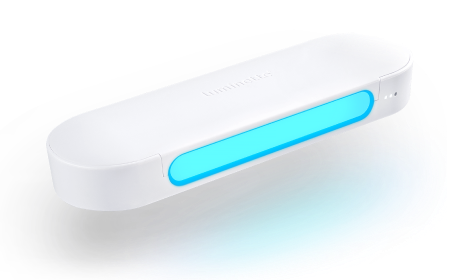


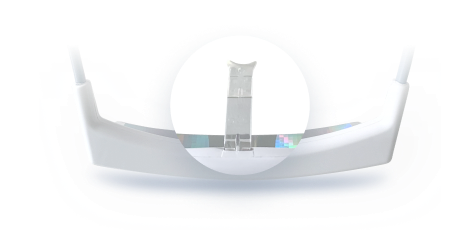






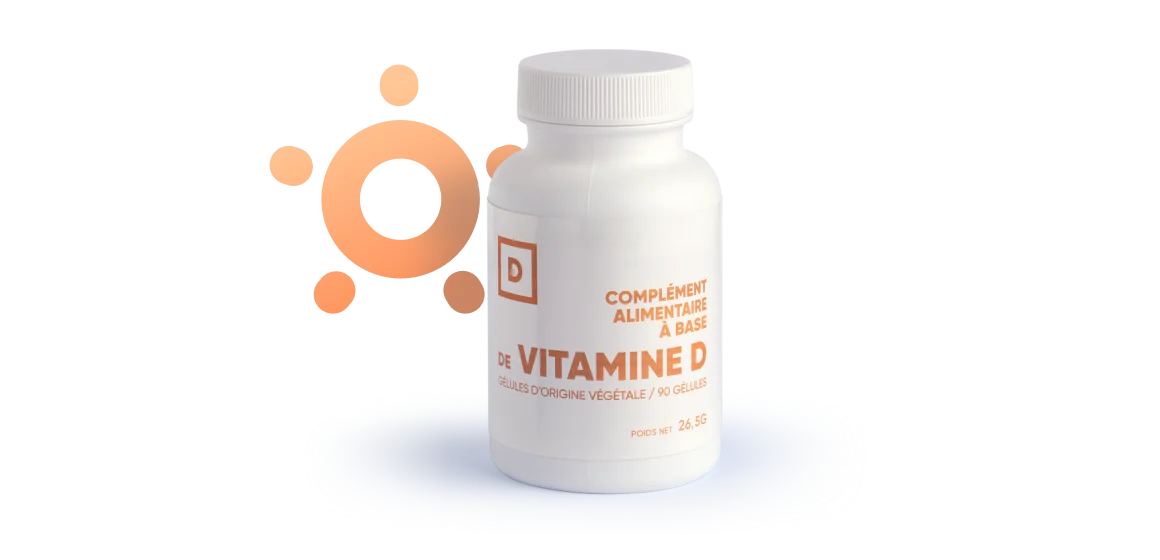

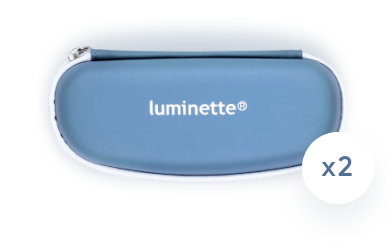





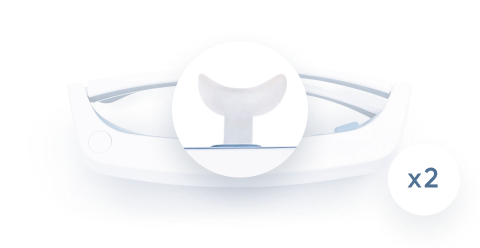






















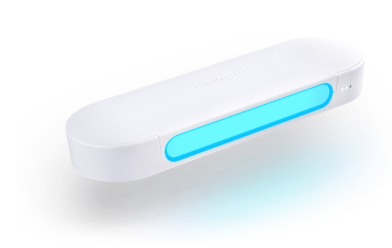




 Please note
Please note








